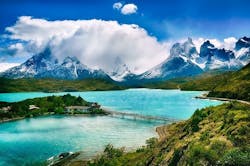The copper industry in Chile will triple its use of seawater for industrial process in the next decade, according to state copper agency Cochilco.
According to CNBC, Cochilco said in a report that it expected use of seawater to increase by 230% over 2018 levels. The report said seawater could satisfy 43% of the miner’s demands by 2029.
"More and more miners are building their own desalination plants or using water straight from the ocean to confront shortages of water," the report said, according to CNBC.
BHP, Glencore, Anglo American, and other producers mainly operate in Northern Chile. According to Mining Technology, Chile is not only an arid desert region but is also considered to be one of the driest places on Earth.
Escondida produced 1.15 million tons through November, according to Reuters. It is now up 40.7% compared with the same period in 2017, when an strike shut down the mine for more than 40 days.
According to Cochilco, production of red metal is expected to grow more than six million ton for the first time this year and will continue to experience a 30% growth over the next decade. The agency also said existing and aging mines will see a 19% annual decline in production to 4.46 million tons. It warns that production growth will continue on if a recent lot of mining investments materialize.
Production from miner Codelco’s deposits reached 1.621 million tons in the first 11 months of 2018, according to Reuters. The country’s second-largest mine by Collahuasi ramped up production by 5.8% to 502,600 tons.
